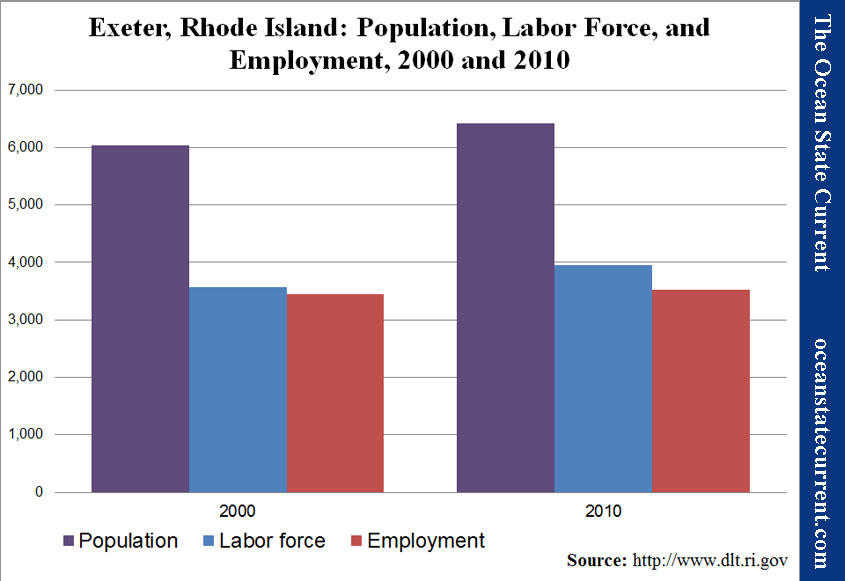State in Decline, Employment in RI Cities and Towns: Exeter
With any town of Exeter’s small population size, state and national employment data is going to rely heavily on a model (rather than direct survey results), but to the extent that the numbers accurately reflect what’s happening, Exeter in stagnation.
In March 2012, the town’s not-seasonally-adjusted unemployment rate was 12.2%, just a bit over the state’s 11.8%. But that’s after a decade of relatively consistent growth.
From 2000 to 2010, the U.S. Census found that Exeter’s population grew 6.3%. Meanwhile data from the U.S. Bureau of Labor Statistics (via the RI Dept. of Labor and Training) shows labor force growth of 10.6% and employment growth of 2.1%.
The following chart, however, shows that Exeter’s isn’t really a story of jobs not keeping up with the number of people who want to work. The town was growing nicely until around 2007, when the labor force and employment leveled off. Then, employment fell, and the overall trend for both metrics has been pretty static since.
Unemployment is represented as the space between the two lines.
Note on the Data
The population data above comes from the U.S. Census conducted every ten years and is therefore generally considered reliable, to the extent that is used as reference for various government programs and voter districting.
The labor force and unemployment data, however, derives from the New England City and Town Areas (NECTAS) segment of the Local Area Unemployment Statistics (LAUS) of the federal Bureau of Labor Statistics (BLS). A detailed summary of the methodology is not readily available, but in basic terms, it is a model based on and benchmarked to several public surveys. It can be assumed that the sample rate (i.e., the number of people actually surveyed) in each Rhode Island town is very small (averaging roughly 30 people per municipality).
The trends shown, it must be emphasized, are most appropriately seen as trends in the model that generally relate to what’s actually happening among the population but are not an immediate reflection of it. Taking action on the assumption that the exact number of employed or unemployed residents shown corresponds directly to real people in a town would vest much too much confidence in the model’s accuracy.
Be that as it may, the data has been collected and published, and taken a town at a time, it is relatively easy to digest. So, curiosity leads the Current to see it as the best available data to deepen our understanding of trends within Rhode Island. If the findings comport with readers’ sense of how the towns relate to each other, perhaps lessons regarding local and statewide policies may be drawn. If not, then the lesson will be on the limitations of data in our era of information overload.





